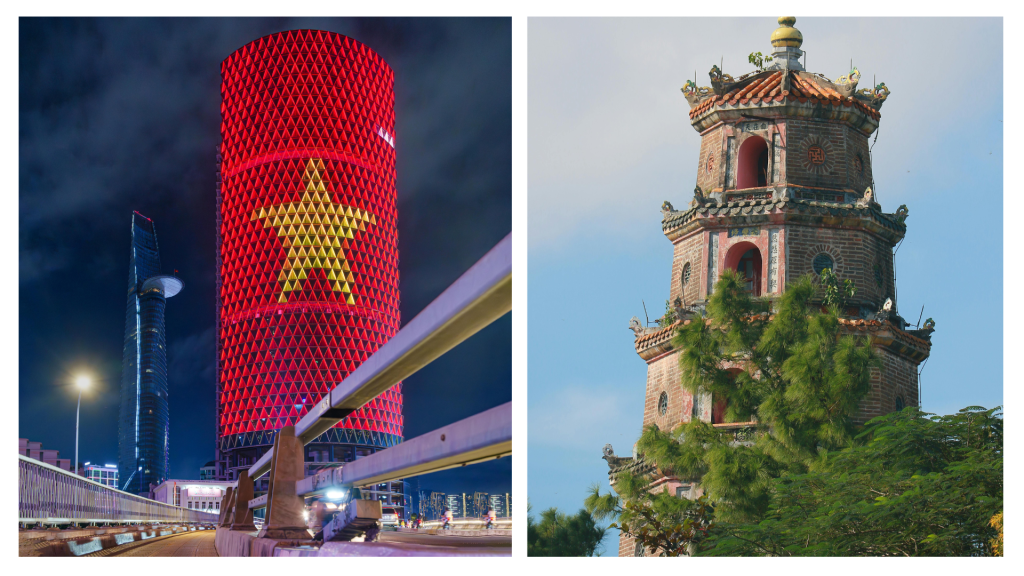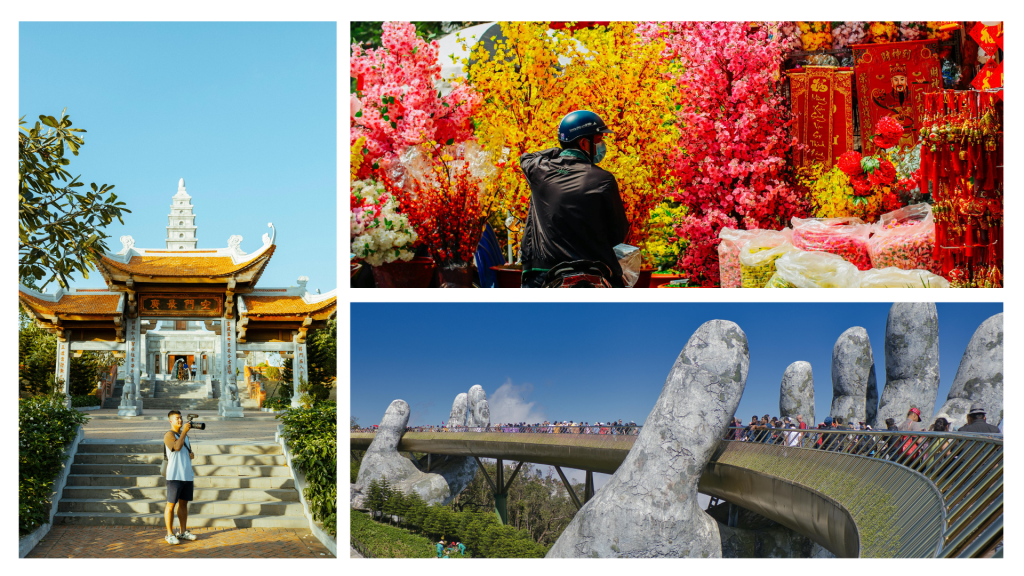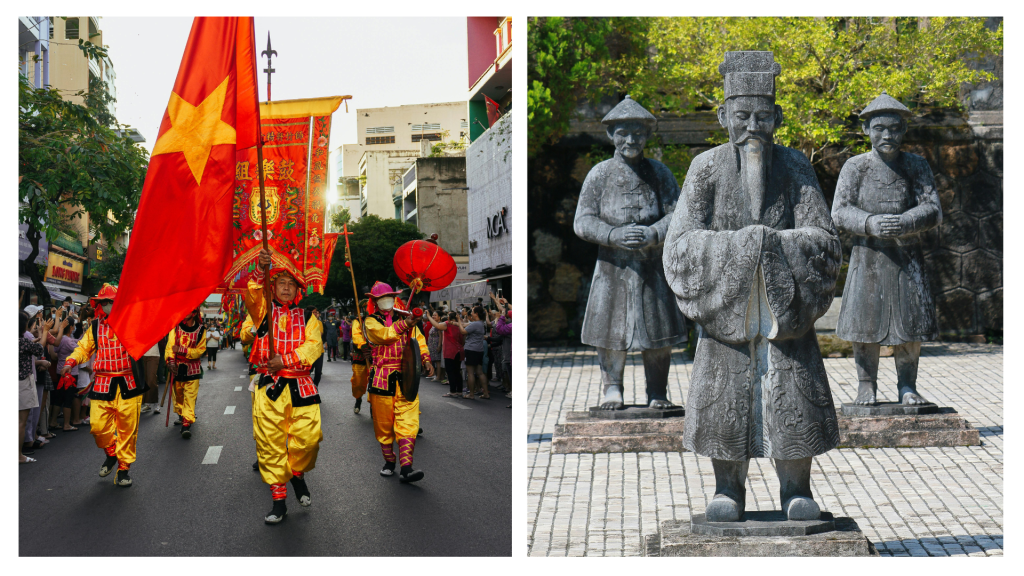Vietnam Digital Nomad Visa: All You Need to Apply in 2025
Detailed information about the digital nomad visa in Vietnam: Current events, recommendations and processes for living in this Asian destination.
Vietnam has emerged as an irresistible destination on the radar of digital nomads, with a vibrant atmosphere and a very affordable cost of living compared to other Asian countries.
But how do you enjoy the riches and comforts that Vietnam has to offer while you work? Is there currently a digital nomad visa for Vietnam? Read on, because we have prepared an article on the most convenient visa process for digital nomads in 2024, such as the E-visa. Here our practical guide will take you through all the resources you need to know to live for a certain period of time in this exotic destination.
At Holafly, we also accompany you with the eSIM for Vietnam with high-speed internet. Make sure you connect with your family, colleagues and friends from Danang, Hanoi, Hoi An and other tourist places in this Asian country with our reliable service, backed by more than 45,000 customers.


Latest news about the digital nomad visa in Vietnam
Despite the growing interest and growing international community that has noticeably populated the most popular cities, as of 2024 the digital nomad visa for Vietnam has not yet become a reality. The absence of a specific visa dedicated to this community may seem an obstacle, but there are viable alternatives that allow remote professionals to enjoy their stay in the country.
Popular visa types in Vietnam for digital nomads

What is the Electronic Visa (E-visa)?
The electronic visa (E-visa) has become a popular option for foreigners wishing to visit Vietnam. This type of visa issued by the Vietnam Immigration Department facilitates the process of entering the country by allowing you to apply quickly and easily from anywhere in the world. The E-visa can be a single or multiple entry visa, allowing travellers to stay in Vietnam for between 30 and 90 days.
Conditions for granting the E-Visa
In order to apply for an E-visa, applicants must meet certain conditions:
- Residence outside Vietnam: The application must be made by foreigners residing outside Vietnam.
- Valid passport: A valid passport with at least six months validity from the date of entry is required.
- No suspended status: Applicants must not be on the entry suspension lists according to Article 21 of the Law on Entry, Exit, Transit and Residence of Foreigners in Vietnam. You can consult the list of countries listed in this document online.
Ports of entry
E-visa holders can enter Vietnam through specific ports designated by the government. It is important to make sure that the port of entry chosen is one of those approved for the E-visa, to avoid problems upon arrival in the country. This information is detailed on the Vietnamese government’s Immigration website.
| Advantages | Disadvantages |
| –Simplicity: The online process eliminates the need to visit an embassy or consulate. – Speed: Most applications are processed within a few days. – Flexibility: Allows for stays of up to 90 days and single or multiple entry options. | –Limited duration: The E-visa only allows for short stays, which can be a drawback for those seeking to settle for longer. – No work: The E-visa is primarily for tourism and does not grant permission to work legally in Vietnam. – Foreigners from countries described in the Law on Entry, Exit, Transit and Residence are not eligible to apply for the E-visa . |

Work visas in Vietnam
The Vietnam work visa is suitable for foreigners who wish to work legally in the country. There are two types of work visa, called LD1 and LD2, each with its own characteristics and requirements.
Visa LD1
The LD1 visa is intended for foreigners arriving in Vietnam with a work permit exemption certificate. This exemption may apply under international treaties to which Vietnam is a party.
- Validity: The LD1 visa can be valid for up to two years and is renewable.
- Use: Ideal for those who meet specific requirements that allow them to work without a conventional work permit.
LD2 Visa
The LD2 visa is issued to foreigners who need a work permit to work in Vietnam.
- Validity: Like the LD1, the LD2 visa has a maximum duration of two years, but its validity depends on the duration of the work permit. If the latter is less than one year, the work visa will have the same duration.
- Use: This is the most common option for most foreign workers moving to Vietnam.
Important: If you are a frequent traveler and want to stay connected without worrying about expensive roaming or looking for a new SIM at every destination, Holafly’s subscription plans are for you. With a single eSIM, enjoy internet in more than 170 countries for a fixed price and no surprises on your bill. Travel without limits and connect easily and securely! 🚀🌍

Which visa is most suitable for digital nomads in Vietnam?
For the lifestyle of digital nomads who are characterised by staying in countries for extended periods of time for tourism and cultural enjoyment as well as working remotely for companies outside Vietnam, the E-visa may be sufficient and more convenient for the following reasons:
- Ease of obtaining: The E-visa can be applied for quickly and easily online, which is ideal for those planning short stays.
- Low costs: The E-visa fee is lower than that of a work visa, which can be attractive for those looking to save on upfront costs.

Steps to apply for a Vietnam E-Visa
Applying for an electronic visa (E-visa) for Vietnam is a simple process that can be completed online. Below, we explain the detailed steps you need to follow to obtain your visa as a digital nomad in Vietnam.
1. Complete the required information
- Access to the portal: log on to the Vietnam Immigration Departmentwebsite.
- Application form: fill in the online application form. Make sure you provide all the required information accurately.
- Upload documents:
- Passport: upload an image of your passport details page. This image must be clear and legible.
- Photograph: attach a recent photograph where you are looking straight ahead and without glasses. This image must meet the size and quality specifications.
- Registration code: after completing this step, you will receive a registration code that will be sent to the email address you provided. This code is essential to check the status of your application at a later stage.
2. Pay the E-visa fee
- Rates:
- 25 for a single-entry E-Visa (30 days).
- 50 for a multiple-entry E-Visa (90 days).
- Payment process: make the payment through the electronic payment gateway provided by the website. Be sure to complete this step, as the application will not be processed until payment has been made.
- Processing: once your payment is confirmed, your application will be processed.
3. Check the result of the application
- Access to the consultation: after 3 working days, log in again to the Vietnam Immigration Departmentwebsite.
- E-visa search menu: use the search menu to check the status of your visa. You will need to log in:
- Registration code: the code you received by email.
- Email: the email address you used to register.
- Date of birth: the date of birth you entered in your application.
- Printing the visa: if your E-visa is approved, you will have the option to print it. Be sure to do so, as you will need to present it when entering or leaving Vietnam.
It is essential that all information provided in the application is correct and complete. If information is missing or there are errors, your application will not be accepted, which could delay your trip.
Where can I find out about visas and immigration procedures in Vietnam?

Accurate and up-to-date information is essential before undertaking any migration procedure. We suggest you check these sources for information on visas and other related procedures:
1. Vietnamese Embassy
The Vietnamese Embassy in your country of residence is one of the most reliable sources for up-to-date information on Vietnam digital nomad visa and immigration options. On their official website, you will find details on the different types of visas, requirements, fees and specific procedures.
2. Vietnam Immigration Department Portal
The Vietnam Immigration Department has an official website where you can find direct information on E-visa, requirements and other immigration procedures. It is an essential source for confirming visa details.
3. Digital nomad forums
Online communities can be of great help in obtaining information based on real experiences. Here are some recommended platforms:
- Nomad List: An active community where digital nomads share tips and experiences about working and living in different countries, including Vietnam.
- Reddit: Sub-forums such as r/Nomad and r/Vietnam offer discussions on the Vietnam digital nomad visa and experiences of other digital nomads.
4. Specialised travel agencies
There are several agencies that offer advice on immigration procedures and can facilitate the process of obtaining visas. Some recommendations include:
- VN visa online Application: This agency provides fees for E-Visa processing in short periods of time and useful information on the application process on their website vietnam.visaonline.travel.
- Vietnam E-Visa Application: Offers a quick and easy service to obtain e-visas, advice on visa-eligible countries and requirements. Visit their website vietnamvisacenter.com for more information.
The Vietnam E-visa is an affordable process that you can do from the comfort of your home. By following these steps and making sure you meet all the requirements, you will be able to enjoy your stay in Vietnam without any inconvenience.
Frequently asked questions about the digital nomad visa in Vietnam
No, the E-visa is primarily an entry permit for tourism and non-work activities. This means that, although you can enjoy the country and explore its culture, you are not allowed to do paid work while in Vietnam on this visa. If you intend to work legally in Vietnam, you will need to obtain a work visa, such as LD1 or LD2, which allows you to work within the country.
The E-visa application process is fairly quick and usually takes approximately 3 working days from the time you submit your application. However, it is advisable to apply well in advance of your trip to avoid any inconvenience. In addition, if you submit an application during holidays or weekends, the processing time may be extended.
E-visa holders must enter Vietnam through specific ports of entry that are authorised to accept this type of visa. This includes international airports and certain land crossings. Check the list of approved ports on the Vietnam Immigration Department’s website before planning your trip to ensure that your point of entry is one of them.
If your E-visa application is rejected, it is important to know that the fee you paid will not be refunded. It is therefore crucial that you verify all information before submitting it. If you are rejected, you can try to understand the reasons for the rejection and correct any mistakes in a new application. In some cases, you may consider consulting a professional or specialised visa agency for guidance.
Yes, there are certain countries whose citizens are not eligible to apply for an E-visa due to specific Vietnamese government regulations. These restrictions may vary and are often related to international agreements and security issues. Therefore, it is recommended that you check the updated list of countries that can apply for E-visa on the Vietnam Immigration Department website before making your application.
No, the E-visa cannot be extended once you have entered Vietnam. If you wish to overstay your E-visa, you will have to leave the country and apply for a new visa. This means that if you plan to stay longer than 90 days, you should consider other types of visa that allow for longer stays, such as the work visa, which offers a longer duration and the possibility of renewal.





 Language
Language 


















 No results found
No results found








